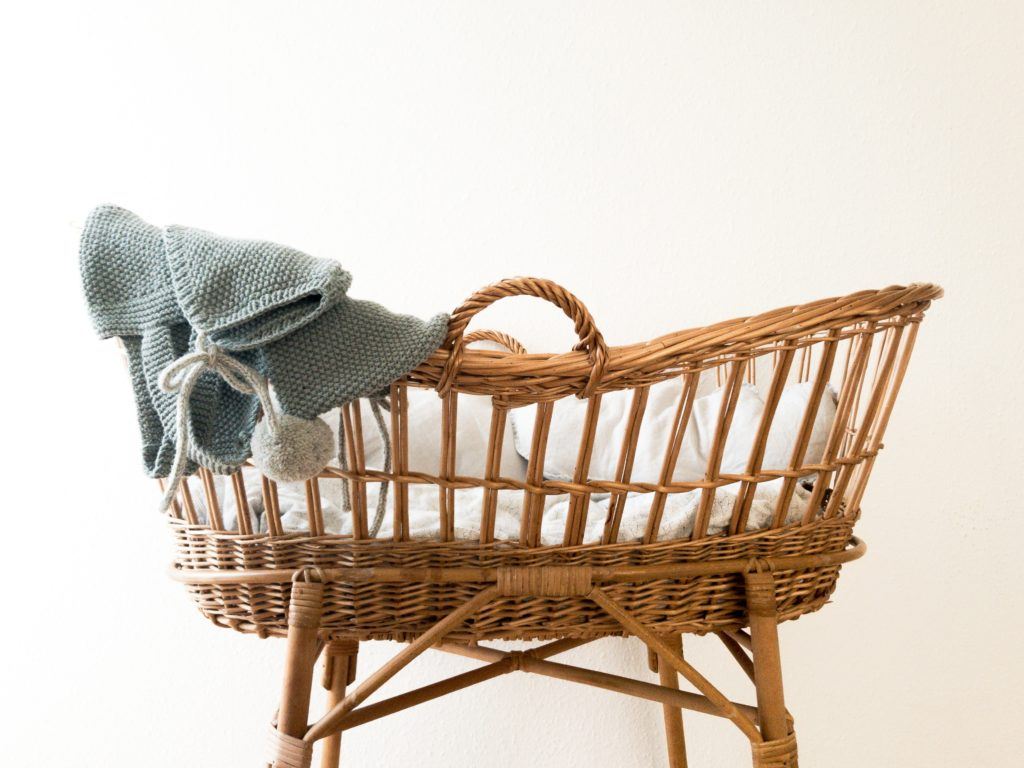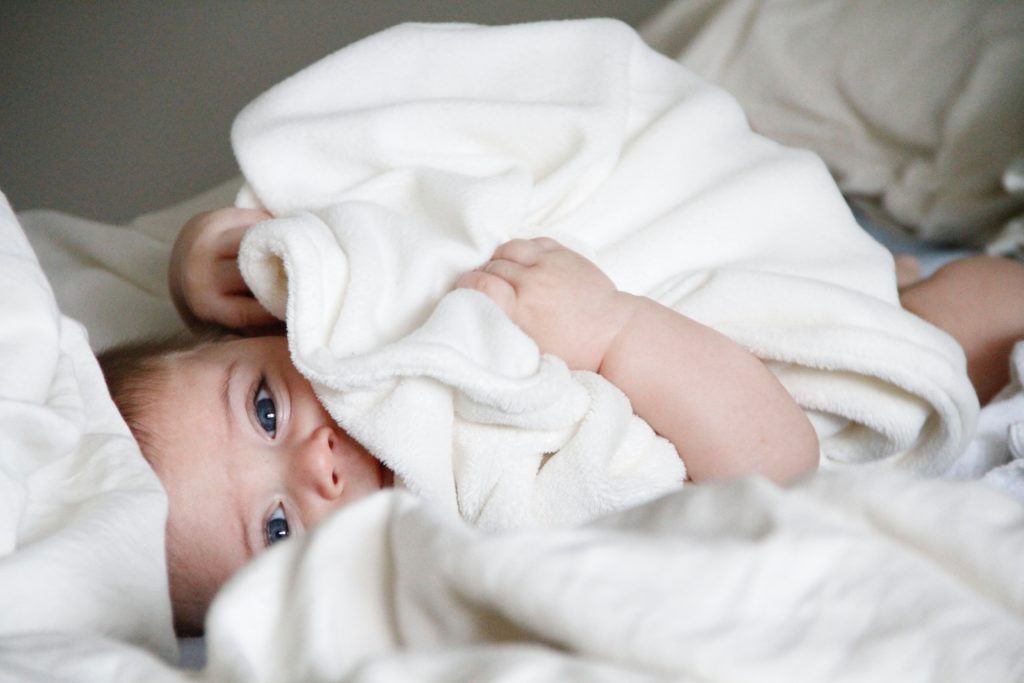Searching for a baby blanket size guide? We’ve got you covered.
Expecting a child can be an exciting time for couples. After all, it is quite fun to think of how to decorate your future child’s rooms and imagine what their life will hold in store for both you and for them.
However, this sort of planning can also be a source of stress. Baby blanket sizes and baby quilt sizes, in particular, can be quite the hassle, as infants tend to easily outgrow them in just a matter of months.
Rest assured, this quick guide will help you choose the right baby blanket dimensions, baby quilt sizes, crib blanket sizes, and crib quilt sizes for your new arrival.
Baby Blanket Size Guide
A short warning before you get started: the American Academy of Pediatrics advises that you do not use soft bedding in your infant’s crib for at least the first year of life, including any baby blankets, security blankets, cotton muslin, pillows, or soft toys.
This can increase the risk for SIDS, or sudden infant death syndrome, as well as the risk of accidental strangulation or suffocation.
Instead, it is advised to use only a tight-fitting sheet in your infant’s crib until they are at least twelve months old.
Baby Blanket Materials
Your baby’s skin is quite sensitive, so it is best to choose soft, easily washable materials such as organic cotton and lightweight flannel.
Wool is a good, durable material as well; however, you must be completely sure that your baby is not allergic to it first. Typically, hypoallergenic fabrics or any fabrics that are light and breathable are ideal.
Though you may want to crochet a blanket for your infant, it is best to avoid using any such loose-knit blankets until your infant is at least twelve months of age.
Take a look at this video for more information:
Receiving Blanket Dimensions
The first and smallest baby blanket size is the receiving blanket, which is the type parents will bring their newborn home in from the hospital. These can range in size depending on if your baby is a preemie (prematurely born) or not.
Smaller preemie baby blanket dimensions should be 18 x 20 inches, while larger preemie baby blanket dimensions should be a 24-inch square.
Average newborn baby blanket dimensions should be 28 x 34 inches or 30 inches all around if a square blanket is what you desire.
You may also use a 30-inch square quilt or 30 x 40-inch quilt if you so wish.
Baby Blanket Sizes
How big is a baby blanket?
The average baby blanket dimensions are typically 34 x 46 inches, or anywhere from 34-36 inches all around if you want a square blanket.
As babies tend to vary in size, so too do baby blanket dimensions, so be sure you choose the size right for your child.
Baby Quilt, Crib Blanket, and Crib Quilt Sizes
All these tend to be the same size. On average, the blankets measure 36 x 52 inches.
However, it is best to measure the dimensions of your baby’s crib beforehand to allow for any size changes to the blanket or quilt.
It is always advised to double-check these measurements, as cribs can vary anywhere from 4-8 inches in both width and/or length from the average measurements given.
It is best to add length to the quilt if you are still unsure while measuring, so that the quilt’s borders may hang off the edge of the mattress.
Always remember that crib blankets must be free of any loose threads, buttons, or large holes that may pose a risk for your baby. The same goes for any sort of quilt as well.
Baby quilt dimensions can exceed a 36-inch width if you so desire, especially if you plan to use it exclusively as a play blanket for your baby to crawl on (these can be a larger size). This longer width can also act as a cover for your child as they grow older.

Crib blanket dimensions can also be smaller, about 30 x 36 inches on average.
Quilt dimensions depend heavily on the pattern you want to sew, as well as the measurements of the batting and backing.
If you choose to baste and quilt your baby’s blanket yourself, allow a couple inches overhanging for both the batting and the backing. However, if you would like to use a long-arm quilter instead, overhang 4 inches for both batting and backing on each side.
Quilt Resizing Guide
Of course, after spending a long time sewing your baby’s swaddle blanket or quilt, it is difficult to part with it once they outgrow it.
This blanket or quilt can always be used as a throw or kept as a child’s security item, but you may also want to resize your baby’s blanket or quilt to grow as they do.
First, it is crucial to know what size you want the quilt to be, and if you want to change the number of blocks or the size of the already existing blocks on the quilt. Keep in mind that it is easier to change the number of blocks.
For either of these resizing methods, you must first measure your old pattern’s width (A), length (B), and the width of all the quilt’s borders (C).
You must then subtract your quilt’s width from the width of the borders to find the width of your center block (A-C=D). The same goes for finding the length of this center block (B-C=E), as this block is the cornerstone of the entire quilt. You must also do the same with your desired width and length for your new pattern.
Double, or even triple-check your math on these measurements as they are absolutely crucial to the right size of baby blanket.
For changing the number of blocks, the length and width of the center block (D and E) will be used here. Allow 0.5 inches for seam allowances on each square. So, for instance, if you cut a square at 3 inches, reduce each side by 0.5 inches for seam allowances to make a 2.5-inch square.
To calculate how many blocks you will need to fit your desired dimensions, take your desired width and length and divide each by the block size. Rounding the number you end up with allows for a rough estimate of blocks the quilt will need.
Example:
Desired width: 36 inches
Desired length: 52 inches
Block size: 2.5 inches (after seam allowance)
36/2.5 = 14.4 blocks
52/2.5 = 20.8 blocks
After rounding, the example quilt would be 14 blocks across 21 rows long.
In order to resize the quilt to have the same number of blocks, you must determine how much larger you need to make your center block.
You must calculate a percentage by taking your desired dimensions’ width and length and dividing that against the old dimensions.
Example:
Desired Width: 54 inches
Old Width: 36 inches
54/36 = 1.5 or 150%
Old Length: 48 inches
48 x 1.5 = 72 inches
Desired Length: 72 inches
New Dimensions: 54×72 inches

You must also remove the seam allowance from the size of the center block the pattern tells you to cut, multiply that by the percentage you want to change the block’s size to, and add back in the seam allowance.
Example:
Pattern’s Sizes to Cut: 3 inches
Seam Allowance: 0.5 inches
3-0.5=2.5 inches
Percentage Increase: 150% or 1.5
2.5 x 1.5 = 3.75 inches + 0.5 inches (seam allowance) = 4.25 inches
So you would then cut up 4.25-inch squares, with the blocks ending up 3.75 inches after being sewn.
Use the same number of blocks and placement as the pattern originally called for, and your quilt will be resized.
Again, be sure to check all your math before you get started on cutting to get the measurements correct. Do not feel pressured to make it perfect, though!
See also: How to do a blanket stitch.
Our Favorite Baby Blankets
We know that most of you love the idea of making your own baby blankets and baby quilts, but we thought we’d compile a few of our favorite products just in case you run out of time to create.
Take a look at these beauties:
Conclusion
Baby blankets and quilts sizes, and crib blankets and quilts sizes can be quite the hassle to get down pact, so hopefully this guide has given you some insight into finding the one that suits your baby best.
Congratulations, parents! On to the next step!
For more sewing projects and tutorials, be sure to visit our sewing tutorials section where you’ll find hundreds of ideas for your next project!
